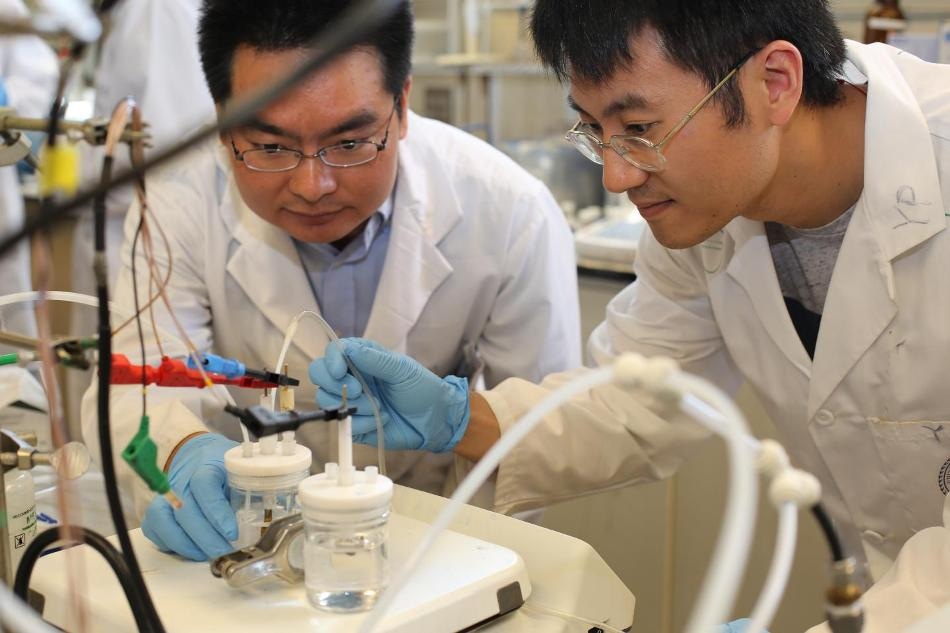Aug 4 2016
 U of T Engineering researchers Min Liu (left), Yuanjie Pang and their team designed a way to efficiently reduce climate-warming carbon dioxide into carbon monoxide, a useful chemical building block for fuels such as methanol, ethanol and diesel. (CREDIT: Marit Mitchell, U of T Engineering)
U of T Engineering researchers Min Liu (left), Yuanjie Pang and their team designed a way to efficiently reduce climate-warming carbon dioxide into carbon monoxide, a useful chemical building block for fuels such as methanol, ethanol and diesel. (CREDIT: Marit Mitchell, U of T Engineering)
Although the concept of converting carbon dioxide (CO2) into stored energy sounds like science fiction, researchers have continually tried to find simple techniques to transform CO2 into fuels or other functional chemicals.
Recently, a team of researchers led by Ted Sargent, who is a professor at the University of Toronto's (U of T) Faculty of Applied Science & Engineering, used the marvel of nanoengineering to produce a more efficient technique.
Min Liu and Yuanjie Pang, together with a group of post-doctoral fellows and graduate students in U of T Engineering, have discovered a method that is powered by renewable energies such as wind or solar. The climate-warming CO2 is converted by the catalyst into carbon-monoxide (CO), which is a helpful component in building carbon-based chemical fuels like diesel, ethanol, and methanol.
"CO2 reduction is an important challenge due to inertness of the molecule," says Liu.
We were looking for the best way to both address mounting global energy needs and help the environment. If we take CO2 from industrial flue emissions or from the atmosphere, and use it as a reagent for fuels, which provide long-term storage for green energy, we're killing two birds with one stone.
Yuanjie Pang, U of T
The research team has a sharp solution. They start their procedure by fabricating very small gold nanoneedles whose tips are 10,000 times smaller than a human hair. "The nanoneedles act like lightning rods for catalyzing the reaction," says Liu.
On the application of a minor electrical bias to the array of nanoneedles, a high electric field was produced at the sharp tips of the nanoneedles. This helps to attract CO2, and accelerating the reduction process to CO at speeds faster than any other catalyst reported formerly.
This signifies a remarkable leap in selectivity and efficiency that makes CO2 reduction more accessible to the domain of commercial electrolysers. The research team is currently working on the subsequent step of omitting the CO and directly producing more conventional fuels.
The research findings have been published in the Nature journal.
The field of water-splitting for energy storage has seen rapid advances, especially in the intensity with which these reactions can be performed on a heterogeneous catalyst at low overpotential -- now, analogous breakthroughs in the rate of CO2 reduction using renewable electricity are urgently needed. The University of Toronto team's breakthrough was achieved using a new concept of field-induced reagent concentration.
Michael Graetzel, Professor of Physical Chemistry, École Polytechnique Fédérale de Lausanne
"Solving global energy challenges needs solutions that cut across many fields," says Sargent. "This work not only provides a new solution to a longstanding problem of CO2 reduction, but opens possibilities for storage of alternative energies such as solar and wind."